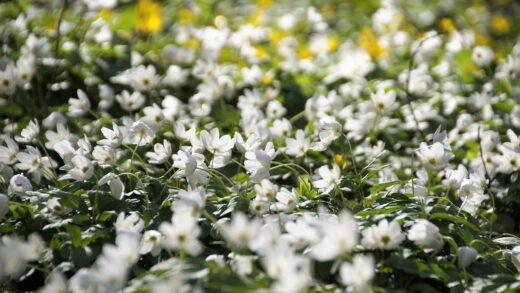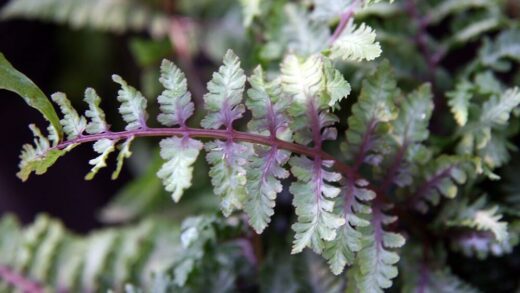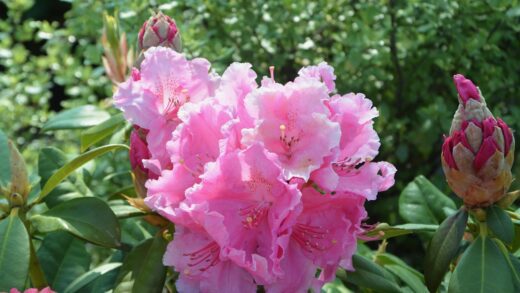The act of pruning a bluebeard shrub is not merely a maintenance chore; it is the fundamental key that unlocks its true ornamental potential. This plant has a unique growth habit that makes an annual hard pruning an absolute necessity for achieving a compact form and a breathtaking floral display. Unlike shrubs that bloom on old wood and require selective trimming, bluebeard flowers exclusively on the new growth produced in the current season. Understanding this single principle is the foundation of all proper pruning techniques for this remarkable plant and will transform your approach from hesitant trimming to confident renewal.
Because the flowers are formed on new stems, the primary goal of pruning is to stimulate the plant to produce as many vigorous new stems as possible each spring. This is accomplished by cutting the entire shrub back hard in late winter or early spring, removing all of the previous year’s growth. This may seem drastic, even alarming, to new gardeners, but it is precisely what the plant needs. This severe haircut forces the plant to regenerate from its woody base and crown, resulting in a dense, well-branched structure that will be laden with flowers from late summer until the first frost.
Without this annual renewal, a bluebeard shrub would become a tangled, woody mess. It would put on new growth only at the tips of the old, leggy stems, resulting in a sparse floral display high up on an unattractive framework. The center of the shrub would become congested and unproductive, and the overall shape would be unkempt. The annual hard prune not only maximizes flowering but also continuously rejuvenates the plant, keeping it compact, healthy, and perfectly suited to a tidy garden border.
Therefore, you should embrace this pruning process as a positive and essential interaction with your plant. It is a simple, quick task that pays enormous dividends later in the season. With a sharp pair of pruners and a little knowledge of timing and technique, you can ensure your bluebeard performs at its absolute peak year after year, becoming a reliable and stunning highlight of your late-season garden.
The fundamental principles of pruning bluebeard
The single most important principle to understand when pruning bluebeard is that it blooms on new wood. This means that all the flowers for the upcoming season will be produced on the stems that grow in the spring and summer of that same year. This characteristic dictates the entire pruning strategy. The old, woody stems that remain from the previous season will not produce flowers themselves; their only purpose is to serve as a framework from which new, flower-bearing shoots will emerge. Therefore, removing this old wood is not detrimental but is, in fact, essential for a good floral display.
More articles on this topic
This growth habit classifies bluebeard as a sub-shrub, a plant that has a persistent woody base but whose top growth is often herbaceous or dies back in the winter. The annual pruning effectively mimics the natural dieback that would occur in colder climates, but it provides a cleaner look and encourages even more vigorous regrowth. By cutting the plant back to a low framework, you are directing all of the plant’s stored energy into producing a fresh flush of strong, healthy, and productive new stems from the base.
The objectives of this annual pruning are threefold. First and foremost, it is to maximize flower production by stimulating an abundance of new stems. Second, it is to maintain a compact, dense, and attractive mounded shape, preventing the plant from becoming leggy and open. Third, it serves to remove any dead, damaged, or weak wood, which improves the overall health and air circulation within the plant, helping to prevent disease.
This approach is fundamentally different from the pruning required for shrubs that bloom on old wood, such as forsythia or lilac. For those plants, pruning them back hard in the spring would remove all the flower buds for the year. For bluebeard, the opposite is true; failing to prune it back hard will result in a significantly diminished flower show. Mastering this one key difference is crucial for any gardener wishing to successfully cultivate bluebeard.
When to perform the annual hard prune
The timing of your annual pruning is critical to the health and performance of your bluebeard. The ideal window for this task is in the late winter or very early spring. At this time, the plant is still fully dormant, but the harshest cold of winter has passed. Pruning during this window allows you to get the job done before the plant expends any energy on developing buds on the old stems, ensuring all its resources are channeled into the new growth that will follow your cuts.
More articles on this topic
A good visual cue for the right time to prune is to watch for the first signs of life. As the soil begins to warm, you may see tiny new buds beginning to swell on the lower parts of the woody stems. This is the perfect signal that the plant is waking up from dormancy and that it’s time to make your cuts. Acting at this moment ensures you are working in sync with the plant’s natural growth cycle. Waiting too long, until the new shoots have already started to extend, is not ideal as you will be cutting off growth that the plant has already invested energy in.
Avoid the temptation to prune your bluebeard in the autumn. While it may seem like a good way to tidy up the garden before winter, leaving the old stems in place provides several benefits. The standing stems offer a small amount of protection to the sensitive crown of the plant, helping to trap insulating snow and leaves around its base. They can also provide some minor winter interest in the landscape. Most importantly, making large pruning cuts in the autumn can create wounds that may not heal properly before the onset of wet, cold weather, potentially creating an entry point for disease.
If you live in a very cold climate (e.g., zone 5), some gardeners prefer to wait until a little later in the spring, after the absolute last hard frost is likely to have passed. This ensures that the newly exposed cuts and the tender emerging buds are not damaged by a late cold snap. For most regions within bluebeard’s hardiness range, however, the late winter to early spring window is optimal and provides the best results for a healthy, floriferous shrub.
Step-by-step guide to cutting back
Pruning a bluebeard is a refreshingly simple and satisfying task that requires just a few basic tools. You will need a clean, sharp pair of bypass pruners for the smaller stems and possibly a pair of loppers for any thicker, woodier stems at the base. Ensuring your tools are sharp is important for making clean cuts that will heal quickly, rather than crushing the plant tissue, which can invite disease. Wiping the blades with rubbing alcohol before you start is also a good practice to prevent the spread of any potential pathogens.
Begin by assessing the entire shrub. Your goal is to remove all of the stems that grew during the previous season. You will be cutting the plant back to a low framework of its woody base. There is no need for delicate, selective cuts; this is a hard renewal pruning. For an established shrub, you will be cutting it back to a height of approximately 15 to 20 centimeters from the ground. This may look severe, but rest assured, this is exactly what the plant needs.
Work your way around the plant, cutting each stem back to the desired height. When making your cuts, try to locate a pair of latent buds on the lower portion of the stem and make your cut about a centimeter above them. This gives the plant a clear point from which to generate its new growth. If you cannot see any visible buds, simply cutting all stems to a uniform low height will still work perfectly, as the plant has many dormant buds at its crown that will be spurred into growth.
Once you have cut back all the stems, take the opportunity to clean up the interior of the plant’s framework. Prune out any small, twiggy pieces of growth or any wood that is clearly dead, damaged, or crossing over other stems. This final cleanup ensures that the new growth will emerge into an open, uncluttered structure with good air circulation. After you are finished, clear away all the pruned stems and add them to your compost pile, leaving the area around your neatly pruned bluebeard clean and ready for the spring surge of growth.
Pruning for rejuvenation of older shrubs
Over time, an older bluebeard shrub that has not been consistently pruned may become large, woody, and less productive. The center of the plant can become a congested thicket of old, non-flowering stems, with new growth only appearing sparsely at the outer edges. In these cases, a more aggressive rejuvenation pruning can be performed to restore the plant’s vigor and attractive form. This process is essentially an even harder version of the standard annual prune.
For a severely overgrown and woody shrub, you may need to cut it back even lower than the standard 15-20 centimeters. Using a sharp pair of loppers or even a pruning saw, cut the old, thick stems back to within 5-10 centimeters of the ground. The goal is to get below the congested upper framework and stimulate the latent buds located on the crown of the plant, right at the soil line. This forces the plant to build an entirely new structure from the ground up.
This severe rejuvenation pruning should be done at the same time as the regular annual prune, in late winter or early spring before new growth begins. After cutting the plant back, it is a good idea to provide it with some extra support for the intensive growth period ahead. Top-dress the soil around the base of the plant with a generous layer of compost and apply a balanced, slow-release fertilizer. Water the plant well after a few weeks as it starts to push new shoots.
The plant’s response to this hard reset will be a flush of vigorous, strong new stems from the base. Because you are starting with a clean slate, you may want to selectively thin some of the new shoots if they are extremely dense, choosing to keep the strongest and best-spaced stems. By the end of the season, your old, tired shrub will have been transformed back into a vibrant, youthful, and floriferous specimen, ready to resume its role as a star of the late-season garden.


















